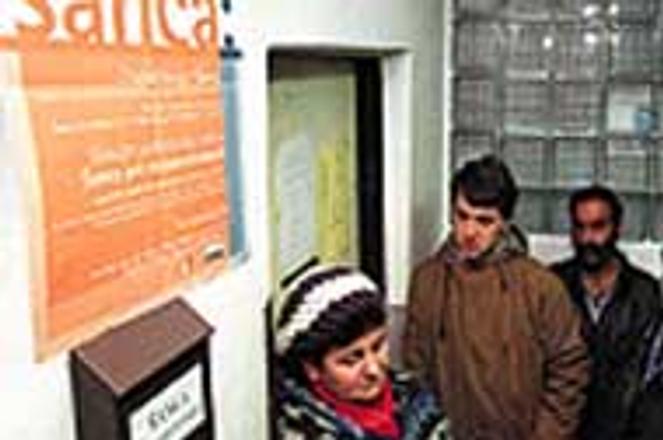A typical scene at labour offices across the country with unemployment running at 19.52%. A new scheme from the is hoping to get more young people in work and bring down the spiralling rate.photo: TASR
Secondary schools and universities are set to release 103,000 graduates in a few weeks, and according to recent labour market trends, 50% of them may to go straight to the nearest district Labour Office to add to the 19.2% unemployed in Slovakia. In an effort to head them off, the National Labour Office together with regional labour offices in six Slovak towns are launching a pilot programme to boost youth employment.
The core of the project, which will cost 16 million Slovak crowns ($350 000) and may later be implemented as a key part of an overall employment policy, is the provision of consultancy services for young people to help them find employment or start businesses and provide retraining programmes.
Within the project, 800 young people between 18 and 26 years who have been unemployed for more than one year will have the chance to enrol in the scheme.
The pilot project has been warmly welcomed by both regional labour offices as well as the Ministry of Labour, Social Affairs and Family. The ministry has long stressed the growing problems with youth unemployment and what it has consistently maintained is its impact on the already high national jobless rate.
"Young unemployed people between the ages of 15 and 29 account for 47% of the total unemployment rate," said Peter Rusiňák, head of the employment section at the ministry.
"This percentage will certainly increase when more than 100 000 new graduates try to find a job this year. This is why we believe that this pilot project is the key to lowering the national unemployment rate," he said.
Six districts - Prešov, Svidník, Žilina, Ilava, Liptovský Mikuláš and Bratislava's fifth district - will compete in training young people. Labour offices will then evaluate how successful participants are in finding a new job after they complete their training stints.
Rusiňák said that he believes the pilot project will be successful and will be spread into more than just six regions in the future.
Despite the fact that the project is only in its initial phase, officials in the regional labour offices in Svidník and Prešov have already begun discussions with representatives of regional companies which are likely candidates to take on the scheme's participants after their course.
"We started discussions with these companies to manage a planned 62% success rate of the programme, although on the basis of experiences that I have had, I personally believe that the success rate will be only about 40%," said Juraj Bobko, head of the County Labour Office in Prešov.
There are about 8,000 young people between the age of 18 and 26 unemployed in the Prešov district. The figure is 1,800 in the Svidník district.
Corporate sector restructuring is seen as the key to curbing the unemployment rate. When the government approved its two-year plan at the end of last November, it aimed to lower the number of jobless, especially those under the age of 29, and clamp down on the number of people working illegally and still claiming state benefits.
Analysts at the time said that the government plan missed not only incentives for foreign investors and a clear programme for transforming the economy by restructuring the business sector, but also retraining programmes.
Now, however, some have claimed that more severe measures should be taken to cut back unemployment benefits and force people, especially the young, to find employment.
"I think that the government should stop paying monthly handouts to people that are younger than 30 or 35," said Martin Barto, head of strategy at the state-owned bank Slovenská sporiteľňa (SLSP). He added that young people in Slovakia have been sapped of the will to work by the state's over-generous social welfare scheme.
"It's impossible for Slovakia to have 250 000 young people unemployed when in every other country these people produce most of the country's economic value."
Despite the launch of the project, there are still reservations over how much can actually be achieved.
Bobko said the expected success rate is far lower than that of similar projects carried out in 1994 and 1995. "At that time the overall situation in the business sector was much better than now. We also got more money for projects," Bobko explained.
"Nowadays, the situation in the business sector is worse. So we can instruct these young people how to find a job, but if there aren't healthy companies that will employ them, the programme simply won't work out."


